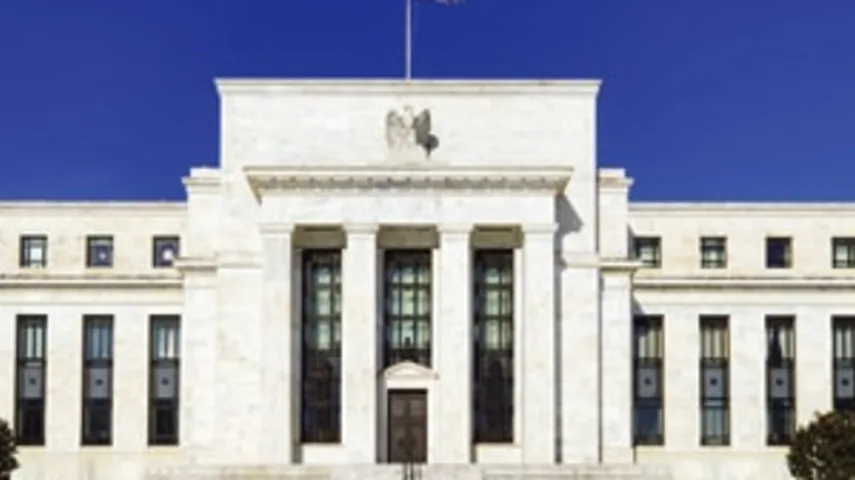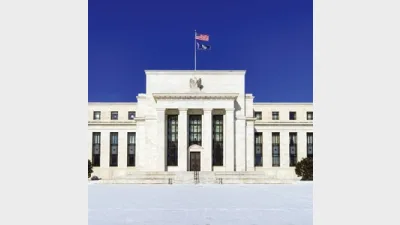Ending Central Bank omnipotence



Central banks have enjoyed an extended period of almost unquestioned power, perhaps because there is no reasonable alternative, Dominic McCormick writes.
We live in a world where major central banks have enormous influence, power and perceived wisdom. To some extent this seems a ludicrous situation. After all, the last decade saw the worst financial crisis in 70 years that many believe was partly caused, or at least heavily facilitated by, prior central bank policies.
There is also the track record of central bank economic forecasting which (admittedly like many private forecasters) has often been abysmal. For example, in mid-last year the US Federal Reserve central forecast for US 2014 GDP was around 3.5 per cent. That was recently downgraded to just over 2 per cent.
Ben Hunt who writes a blog in the US called “Epsilon Theory” calls this the “Narrative of Central Bank Omnipotence” where what key central banks do and say (especially the US Federal Reserve), has become the dominant driver in financial markets. The narrative does not imply that the market will always go up or that central bank policy will always support them but it does suggest that most market outcomes are heavily influenced by the central bank. Still, this narrative is heavily enshrined in such beliefs as the “Bernanke/Yellen Put” and “the Fed has got your back”.
The problem with this central bank obsession is that other investment fundamentals (both good and bad) are largely ignored or overwhelmed. The factors that have historically been important for sensible asset allocation (economic outlook, valuations, sentiment, even momentum) have become peripheral or irrelevant, at least for now. Knowing (or guessing) what central banks will do or say and how markets will respond has become the key, and really only, component necessary for macro analysis.
Even stockpickers are challenged by this narrative. As Hunt notes “if you’re looking to take an exposure based on the idiosyncratic attributes or fundamentals of a publicly traded company … well, I hope you have a long time horizon and very little sensitivity to the price path in the meantime.”
Or as another blogger put it “With the advent of such monetary manipulation it’s very hard to think rationally about what one believes should take place when fundamental principles are no longer even contemplated – let alone have relevance”.
Therefore, investors doing well from an asset allocation perspective in this environment are typically those that are either:
- Accurately pre-empting the implications of actions and words of the central banks (although the poor recent performance of macro hedge funds suggests there are very few of these); or
- Holding to a permanently aggressive “high growth” or “risk on” portfolio that is benefiting most from the easy money environment and faith in central banks to support markets.
Of course the latter approach could get a violent wake-up call when the key narrative changes, or even just when central banks eventually tighten aggressively. However, Hunt does not rule out that the current Fed centric narrative could continue for years. He sees the potential for a drawn out monetary tightening phase in an environment of subdued economic growth and range bound markets.
Perhaps this is how it plays out but it seems the divergence between market levels and fundamentals has already become seriously extended and a major unwind could occur at any time. For example, many US market valuation measures have only been higher at other times of major vulnerability including the lead up to the 2000 tech crash, 2007, 1973 or 1987.
US market volatility levels are implying extreme complacency (back to 2006 levels) and market optimism is at near record levels. Marketwatch recently reported that the S&P500 Index has spent the longest-ever number of sessions above the 200-day moving average - 396 days beating the previous record of 385 in 1995/6.
Most asset prices are being priced off short and long term interest rates that are being set or manipulated by central banks at near zero or record low levels (as the interest rate goes to zero, the theoretical price of any asset that is priced from either earnings or dividends goes to infinity). Is it any surprise that investors have driven up the prices of these assets and focus so much attention on what central banks say and do?
However, if the narrative of central bank omnipotence is a key in driving this exuberance what will break it? While the timing is unclear I suspect markets are increasingly vulnerable to a major “tipping point” where central bank activities cease supporting the current high valuations across many asset classes.
This tipping point could come from two very different developments.
Firstly, stronger economic growth and higher inflation, especially in the US, could force a much more rapid pace of monetary tightening than is currently expected. This could also occur if markets perceive central banks are increasingly behind the curve on inflation pressures. While the recent US inflation rate in the year to May of 2.1 per cent was an example of noisy data, according to Yellen, the future course of inflation bears close watching.
Secondly, it could simply be a change in the key narrative where investors and the markets lose faith that continued easy monetary policy will restore robust economic growth and continue to support asset markets. Increasing criticism of central bank measures such as QE and the distortions of near zero interest rates indicate such sentiment is growing.
While these two very different developments would have some widely divergent effects in specific areas, they both would be hostile to a broad range of assets classes that have benefited from a flight towards risk in recent times.
Hunt says we will know if the central bank narrative is starting to waiver or shift “if and when gold starts to work”. “Buying gold today is a statement that you believe that global economic events may spiral out of the control of Central Bankers… not a store of value or some sort of protection against geopolitical instability … but an insurance policy against massive central bank error and loss of control”.
From its high over $US1900 an ounce in September 2011 on fears that the ECB would lose control of the Euro, Gold bottomed at an intraday low of $US1178 in late June 2013. It again went close to this level in mid-December 2013 and after peaking at just under $US1400 in mid-March 2014 retreated again to around $US1240 in early June before rebounding again recently to over $US 1300 by late June. Is this extended bottoming process and latest rally a sign that Gold investment is starting to work again?
I doubt this latest move is enough to convince many although it is interesting that a 3 per cent rise as part of this rally occurred on the day after the latest June Federal Open Market Committee meeting where Janet Yellen stated that the economy is recovering, rates would stay low, inflation wasn’t a problem and equities were not overvalued. Perhaps cracks are starting to emerge in faith in the Federal Reserve policies?
How should investors respond to this extremely challenging environment? If your portfolio contains a lot of risk assets that have benefited from years of easy money perhaps you should consider gradually taking some of this risk exposure off the table as these areas become more expensive. Duration exposed fixed income may not provide the diversification benefit it once did given very low starting rates and because of higher rates will be part of any central bank ‘normalisation’ of monetary policy. Alternatively, introducing some long volatility exposures, or other hedges (including gold) or alternatives less dependent on mainstream beta can make sense. However, one should not judge the role and performance of such moves in the short term as they will likely cost returns while markets continue to benefit from easy money and central bank omnipotence.
Related to this, one should be cautious about the short/medium term benefits of dynamic/tactical asset allocation while central bank influence dominates, although its value should return with a vengeance when this era eventually ends.
Importantly, decisions to allocate towards cheap areas that are benefiting less from central bank support or to take risk off the table should be properly judged only over extended periods and preferably after we have moved on from a central bank centric environment.
Indeed, assessing the performance of any fund or strategy in the current environment needs to be approached cautiously. Recent past performance will likely prove an even worse guide to future performance than it normally is, especially in any transition to a new “narrative”.
While Australia’s RBA has been less aggressive and active than many overseas central banks the policies of those institutions (especially the Fed) have had major local impacts. Just look at the elevated level of the AUD despite recent falls in the terms of trade.
How will we look back on this period of extreme central bank power and influence in coming decades? It will all depend on how it ends for economies and financial markets but as Hunt says “Human history is littered with the corpses of dead Narratives”. If it ends badly not only will central banks’ influence wane but their powers, which have been stretched to extraordinary levels in the last decade, will likely be cut back dramatically.
Perhaps even their power to control interest rates could be limited or removed. James Grant of Grant’s Interest Rate Observer is one who would like to see this outcome. In a recent newsletter he stated “Price Control is futile. Interest rates are prices. Attempts to control, suppress or otherwise manipulate interest rates are therefore futile.”
Investors shouldn’t fall into the trap of thinking investment markets are back to normal simply because we are almost six years on from the depths of the GFC. True monetary policy normality, when it finally comes, is going to be a major test for economies and markets. However, if the current narrative of central bank omnipotence fades even before such normality returns this could prove an even worse outcome for financial markets. Perhaps this explains why investors continue to place so much faith in central banks’ ability to support economies and markets. The alternatives are just too ugly to contemplate.
Dominic McCormick is the chief investment officer at Select Asset Management.
Recommended for you
In this episode of Relative Return Insider, host Keith Ford and AMP economist My Bui explore Prime Minister Anthony Albanese’s trip to the US and the critical minerals deal stemming from his meeting with President Donald Trump.
In this episode of Relative Return Insider, host Keith Ford and AMP chief economist Shane Oliver unpack the latest unemployment numbers and what they mean for a rate cut, as well as how the latest flare-up in the ongoing US–China trade dispute has highlighted the remaining disparity between gold and bitcoin.
In this episode of Relative Return Insider, host Keith Ford and AMP chief economist Shane Oliver take a look at the unfolding impacts and potential economic ramifications of the US government shutdown and the surge in gold and bitcoin prices.
In the latest episode of Relative Return Insider, host Keith Ford and AMP chief economist, Dr Shane Oliver, discuss this week’s RBA interest rate decision, a potential government shutdown in the US, and a new property scheme aimed at first home buyers.





